MedDeblur: Medical Image Deblurring with Residual Dense Spatial-Asymmetric Attention
Abstract
1. Introduction
- Propose a scale-recurrent deep network with RD-SAM to accelerate the medical image deblurring. The proposed RD-SAM aims to learn salient features from blurry medical images and refine the features with local-global attention.
- Propose to generalize the MID by learning deblurring from multiple medical image modalities. Additionally, the feasibility of the proposed method has been verified with numerous medical image datasets acquired by different image acquisition techniques.
- Study existing deep learning-based deblurring methods for MID and outperformed them in qualitative and quantitative comparisons.
- Illustrate the feasibility of a robust deblurring method in medical image analysis tasks such as segmentation, detection, etc.
2. Related Works
2.1. Medical Image Deblurring
2.2. Deep Image Deblurring
3. Proposed Method
3.1. Deep Network
3.1.1. Residual Dense Spatial-Asymmetric Attention Module (RD-SAM)
3.1.2. Objective Function
3.2. Blur Simulation
| Algorithm 1 Simulating motion blurs on medical images |
|
3.3. Training Details
4. Result and Analysis
4.1. Comparison with State-of-the-Art Methods
4.1.1. Quantitative Comparison
4.1.2. Qualitative Comparison
4.2. Deblurring in Computer-Aided Diagnosis
4.2.1. Segmentation
4.2.2. Detection
4.3. Ablation Study
4.4. Performance Analysis
4.5. Discussion
5. Conclusions
Author Contributions
Funding
Institutional Review Board Statement
Informed Consent Statement
Data Availability Statement
Conflicts of Interest
References
- Sharif, S.; Naqvi, R.A.; Biswas, M. Learning medical image denoising with deep dynamic residual attention network. Mathematics 2020, 8, 2192. [Google Scholar] [CrossRef]
- Sharif, S.; Naqvi, R.A.; Biswas, M.; Loh, W.K. Deep Perceptual Enhancement for Medical Image Analysis. IEEE J. Biomed. Health Inform. 2022, 26, 4826–4836. [Google Scholar] [CrossRef] [PubMed]
- Schuler, C.J.; Hirsch, M.; Harmeling, S.; Schölkopf, B. Learning to deblur. IEEE Trans. Pattern Anal. Mach. Intell. 2015, 38, 1439–1451. [Google Scholar] [CrossRef]
- Khare, A.; Tiwary, U.S. A new method for deblurring and denoising of medical images using complex wavelet transform. In Proceedings of the 2005 IEEE Engineering in Medicine and Biology 27th Annual Conference, Shanghai, China, 17–18 January 2006; pp. 1897–1900. [Google Scholar]
- Amini Gougeh, R.; Yousefi Rezaii, T.; Farzamnia, A. Medical image enhancement and deblurring. In Proceedings of the 11th National Technical Seminar on Unmanned System Technology 2019; Springer: Singapore, 2021; pp. 543–554. [Google Scholar]
- Jiang, M.; Wang, G.; Skinner, M.W.; Rubinstein, J.T.; Vannier, M.W. Blind deblurring of spiral CT images. IEEE Trans. Med. Imaging 2003, 22, 837–845. [Google Scholar] [CrossRef] [PubMed]
- Ahunbay, E.; Pipe, J.G. Rapid method for deblurring spiral MR images. Magn. Reson. Med. Off. J. Int. Soc. Magn. Reson. Med. 2000, 44, 491–494. [Google Scholar] [CrossRef]
- Zhao, H.; Ke, Z.; Chen, N.; Wang, S.; Li, K.; Wang, L.; Gong, X.; Zheng, W.; Song, L.; Liu, Z.; et al. A new deep learning method for image deblurring in optical microscopic systems. J. Biophotonics 2020, 13, e201960147. [Google Scholar] [CrossRef] [PubMed]
- Lin, R.; Zhang, R.; Wang, C.; Yang, X.Q.; Xin, H.L. TEMImageNet training library and AtomSegNet deep-learning models for high-precision atom segmentation, localization, denoising, and deblurring of atomic-resolution images. Sci. Rep. 2021, 11, 1–15. [Google Scholar] [CrossRef]
- Zhang, K.; Ren, W.; Luo, W.; Lai, W.S.; Stenger, B.; Yang, M.H.; Li, H. Deep image deblurring: A survey. Int. J. Comput. Vis. 2022, 130, 2103–2130. [Google Scholar] [CrossRef]
- Zhang, K.; Zuo, W.; Chen, Y.; Meng, D.; Zhang, L. Beyond a gaussian denoiser: Residual learning of deep cnn for image denoising. IEEE Trans. Image Process. 2017, 26, 3142–3155. [Google Scholar] [CrossRef]
- Nah, S.; Hyun Kim, T.; Mu Lee, K. Deep multi-scale convolutional neural network for dynamic scene deblurring. In Proceedings of the IEEE Conference on Computer Vision and Pattern Recognition, Honolulu, HI, USA, 21–26 July 2017; pp. 3883–3891. [Google Scholar]
- Tao, X.; Gao, H.; Shen, X.; Wang, J.; Jia, J. Scale-recurrent network for deep image deblurring. In Proceedings of the IEEE Conference on Computer Vision and Pattern Recognition, Salt Lake City, UT, USA, 18–23 June 2018; pp. 8174–8182. [Google Scholar]
- Zhang, Y.; Tian, Y.; Kong, Y.; Zhong, B.; Fu, Y. Residual dense network for image super-resolution. In Proceedings of the IEEE Conference on Computer Vision and Pattern Recognition, Salt Lake City, UT, USA, 18–23 June 2018; pp. 2472–2481. [Google Scholar]
- Sharif, S.; Naqvi, R.A.; Biswas, M. SAGAN: Adversarial Spatial-asymmetric Attention for Noisy Nona-Bayer Reconstruction. arXiv 2021, arXiv:2110.08619. [Google Scholar]
- Khare, A.; Tiwary, U.S.; Jeon, M. Daubechies complex wavelet transform based multilevel shrinkage for deblurring of medical images in presence of noise. Int. J. Wavelets Multiresolution Inf. Process. 2009, 7, 587–604. [Google Scholar] [CrossRef]
- Tech, M.; Scholar, P. A Modified ADMM Approach for Blind Deblurring of Color Medical Images. Int. J. Eng. Res. Technol. (IJERT) 2014, 3, 51–57. [Google Scholar]
- Al-Ameen, Z.; Sulong, G.; Gapar, M.; Johar, M. Reducing the Gaussian blur artifact from CT medical images by employing a combination of sharpening filters and iterative deblurring algorithms. J. Theor. Appl. Inf. Technol. 2012, 46, 31–36. [Google Scholar]
- Al-Ameen, Z.; Sulong, G. Deblurring computed tomography medical images using a novel amended landweber algorithm. Interdiscip. Sci. Comput. Life Sci. 2015, 7, 319–325. [Google Scholar] [CrossRef]
- Dong, J.; Roth, S.; Schiele, B. Deep wiener deconvolution: Wiener meets deep learning for image deblurring. Adv. Neural Inf. Process. Syst. 2020, 33, 1048–1059. [Google Scholar]
- Sun, J.; Cao, W.; Xu, Z.; Ponce, J. Learning a convolutional neural network for non-uniform motion blur removal. In Proceedings of the IEEE Conference on Computer Vision and Pattern Recognition, Boston, MA, USA, 7–12 June 2015; pp. 769–777. [Google Scholar]
- Ye, M.; Lyu, D.; Chen, G. Scale-Iterative Upscaling Network for Image Deblurring. IEEE Access 2020, 8, 18316–18325. [Google Scholar] [CrossRef]
- Zhang, J.; Pan, J.; Ren, J.; Song, Y.; Bao, L.; Lau, R.W.; Yang, M.H. Dynamic scene deblurring using spatially variant recurrent neural networks. In Proceedings of the IEEE Conference on Computer Vision and Pattern Recognition, Salt Lake City, UT, USA, 18–23 June 2018; pp. 2521–2529. [Google Scholar]
- Kupyn, O.; Budzan, V.; Mykhailych, M.; Mishkin, D.; Matas, J. Deblurgan: Blind motion deblurring using conditional adversarial networks. In Proceedings of the IEEE Conference on Computer Vision and Pattern Recognition, Salt Lake City, UT, USA, 18–23 June 2018; pp. 8183–8192. [Google Scholar]
- Kupyn, O.; Martyniuk, T.; Wu, J.; Wang, Z. Deblurgan-v2: Deblurring (orders-of-magnitude) faster and better. In Proceedings of the IEEE International Conference on Computer Vision, Seoul, Republic of Korea, 27 October–2 November 2019; pp. 8878–8887. [Google Scholar]
- Sharif, S.; Kim, S.; Park, S. Learning real-world anti-spoofing leveraging spatial-asymmetric attention. In Proceedings of the Korea Software Conference (KSC2022), Incheon, Republic of Korea, 18–22 September 2022. [Google Scholar]
- Hu, J.; Shen, L.; Sun, G. Squeeze-and-excitation networks. In Proceedings of the IEEE Conference on Computer Vision and Pattern Recognition, Salt Lake City, UT, USA, 18–23 June 2018; pp. 7132–7141. [Google Scholar]
- Uhlen, M.; Oksvold, P.; Fagerberg, L.; Lundberg, E.; Jonasson, K.; Forsberg, M.; Zwahlen, M.; Kampf, C.; Wester, K.; Hober, S.; et al. Towards a knowledge-based human protein atlas. Nat. Biotechnol. 2010, 28, 1248–1250. [Google Scholar] [CrossRef]
- Irvin, J.; Rajpurkar, P.; Ko, M.; Yu, Y.; Ciurea-Ilcus, S.; Chute, C.; Marklund, H.; Haghgoo, B.; Ball, R.; Shpanskaya, K.; et al. Chexpert: A large chest radiograph dataset with uncertainty labels and expert comparison. In Proceedings of the AAAI Conference on Artificial Intelligence, Honolulu, HI, USA, 27 January–1 February 2019; Volume 33, pp. 590–597. [Google Scholar]
- Zhao, J.; Zhang, Y.; He, X.; Xie, P. COVID-CT-Dataset: A CT scan dataset about COVID-19. arXiv 2020, arXiv:2003.13865. [Google Scholar]
- Rezvantalab, A.; Safigholi, H.; Karimijeshni, S. Dermatologist level dermoscopy skin cancer classification using different deep learning convolutional neural networks algorithms. arXiv 2018, arXiv:1810.10348. [Google Scholar]
- Buda, M.; Saha, A.; Mazurowski, M.A. Association of genomic subtypes of lower-grade gliomas with shape features automatically extracted by a deep learning algorithm. Comput. Biol. Med. 2019, 109, 218–225. [Google Scholar] [CrossRef]
- Sharif, S.; Mahboob, M. Deep hog: A hybrid model to classify bangla isolated alpha-numerical symbols. Neural Netw. World 2019, 29, 111–133. [Google Scholar] [CrossRef]
- Pytorch. PyTorch Framework Code. 2016. Available online: https://pytorch.org/ (accessed on 24 August 2020).
- Kingma, D.P.; Ba, J. Adam: A method for stochastic optimization. arXiv 2014, arXiv:1412.6980. [Google Scholar]
- Ronneberger, O.; Fischer, P.; Brox, T. U-net: Convolutional networks for biomedical image segmentation. In Proceedings of the International Conference on Medical Image Computing and Computer-Assisted Intervention, Munich, Germany, 5–9 October 2015; Springer: Berlin/Heidelberg, Germany, 2015; pp. 234–241. [Google Scholar]
- He, K.; Gkioxari, G.; Dollár, P.; Girshick, R. Mask r-cnn. In Proceedings of the IEEE International Conference on Computer Vision, Venice, Italy, 22–29 October 2017; pp. 2961–2969. [Google Scholar]
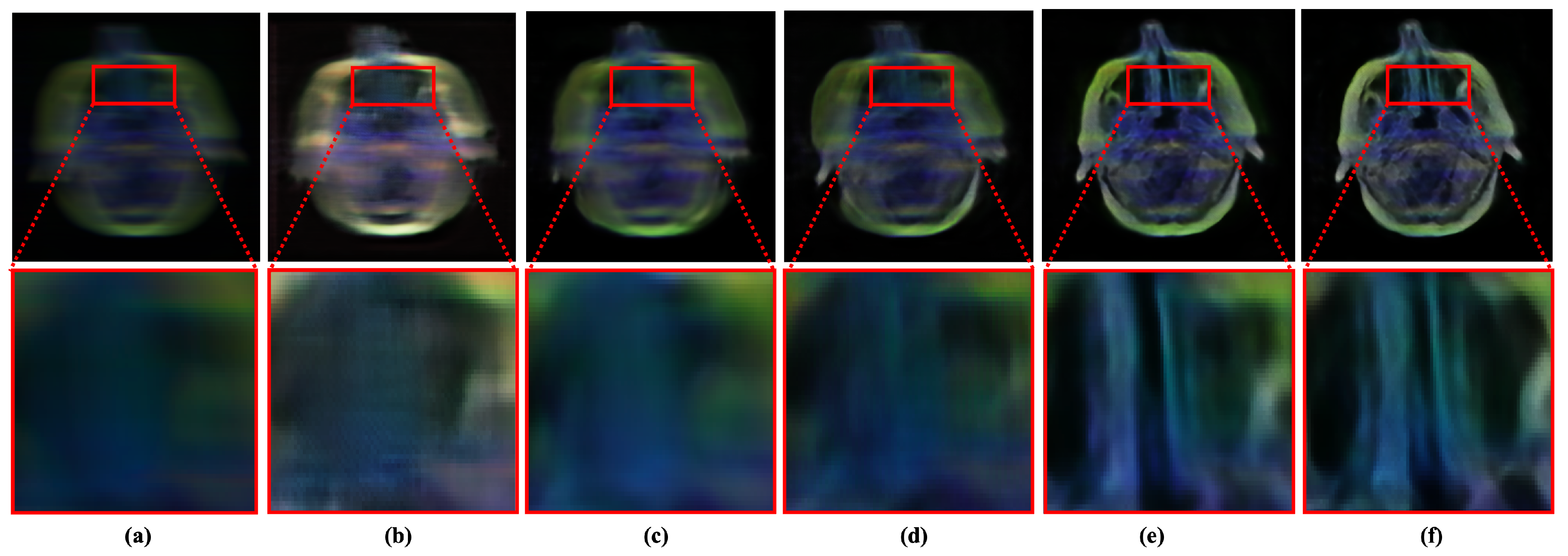
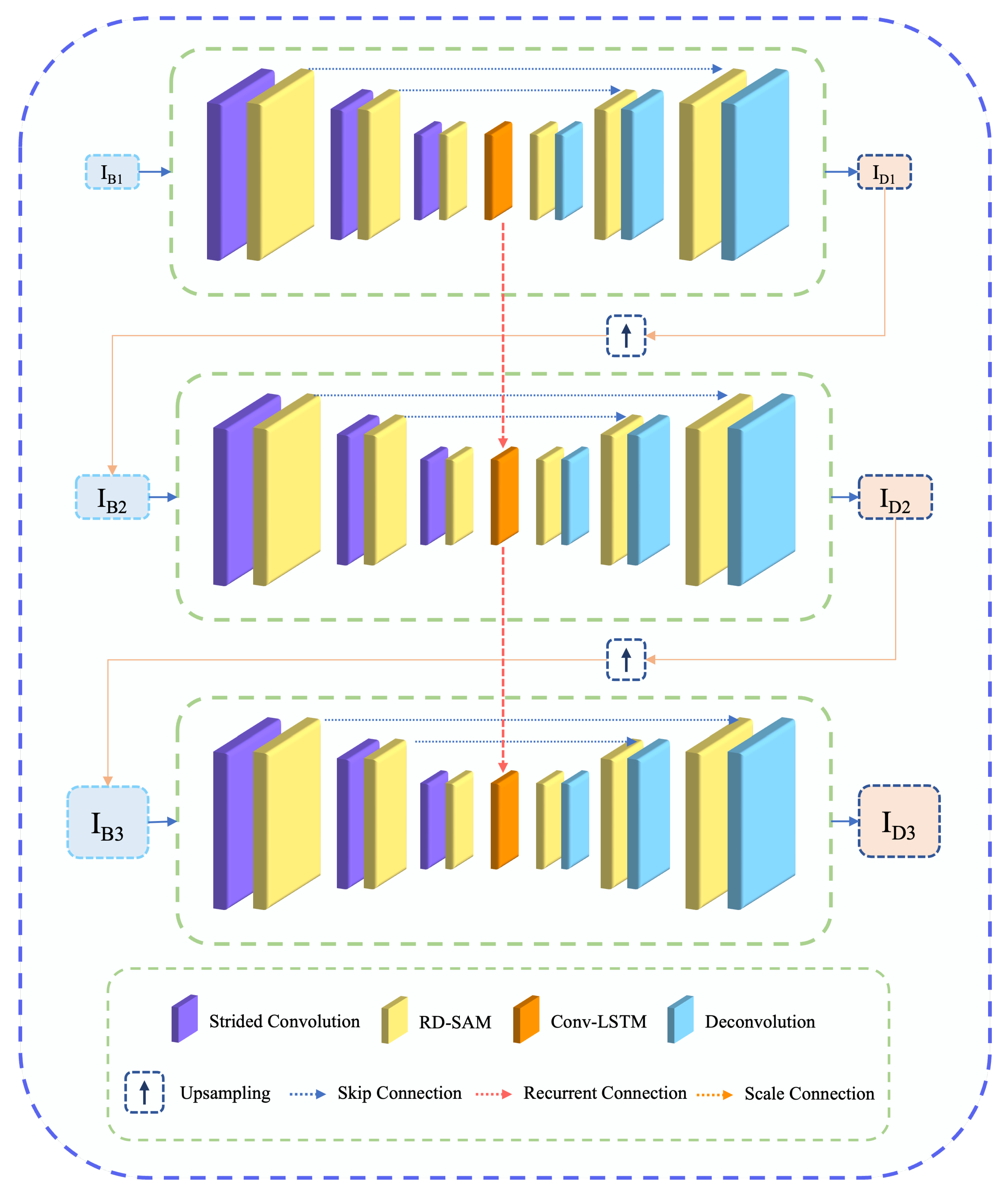
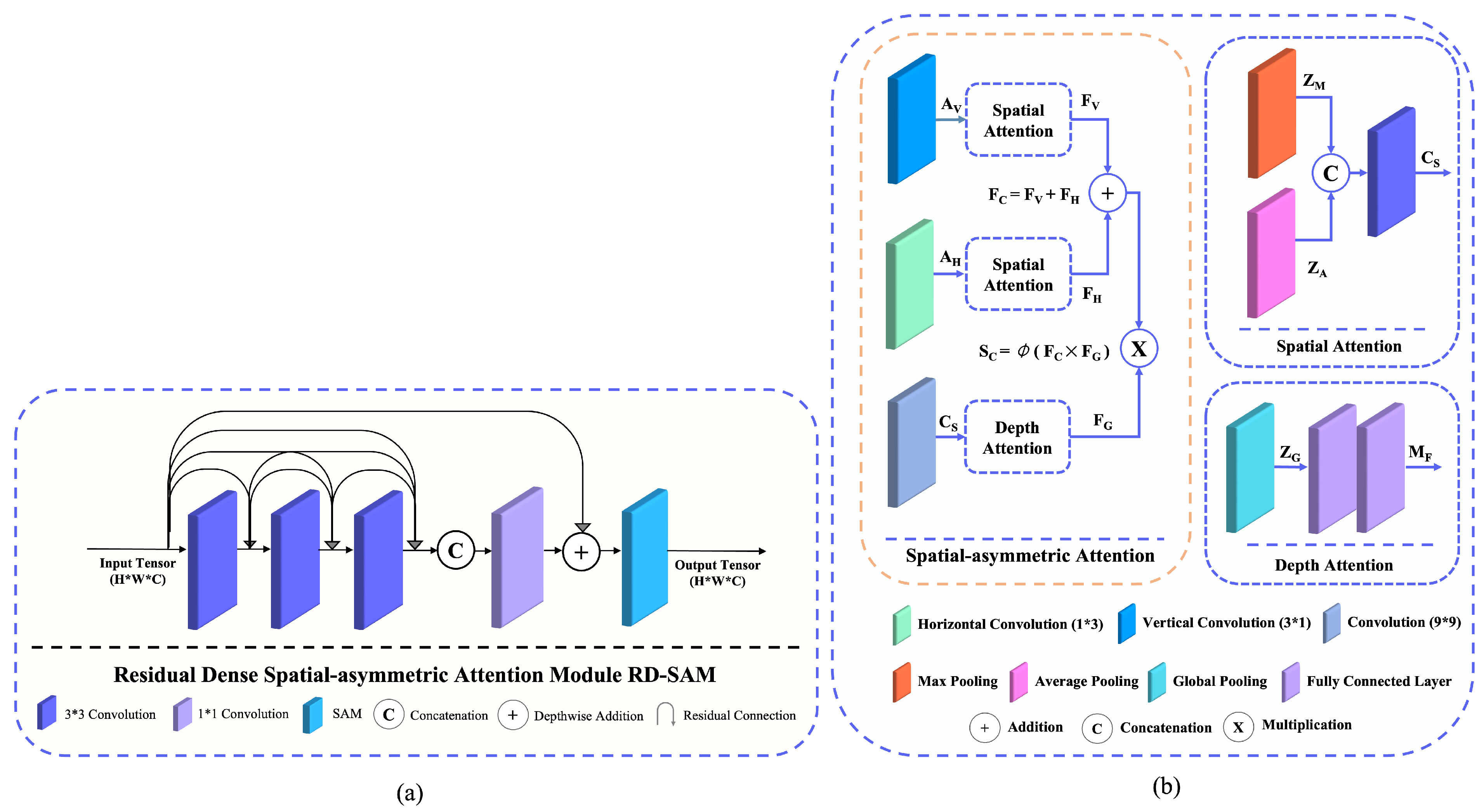
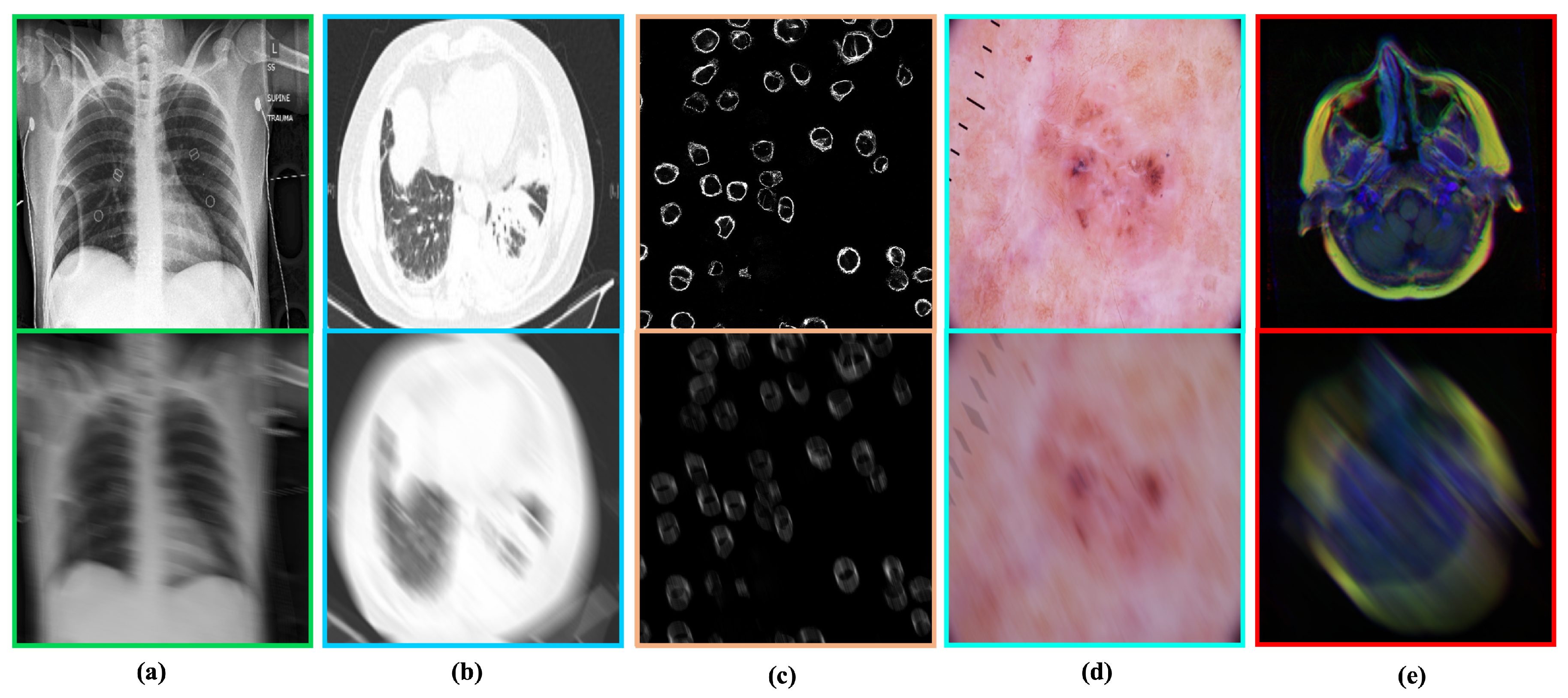

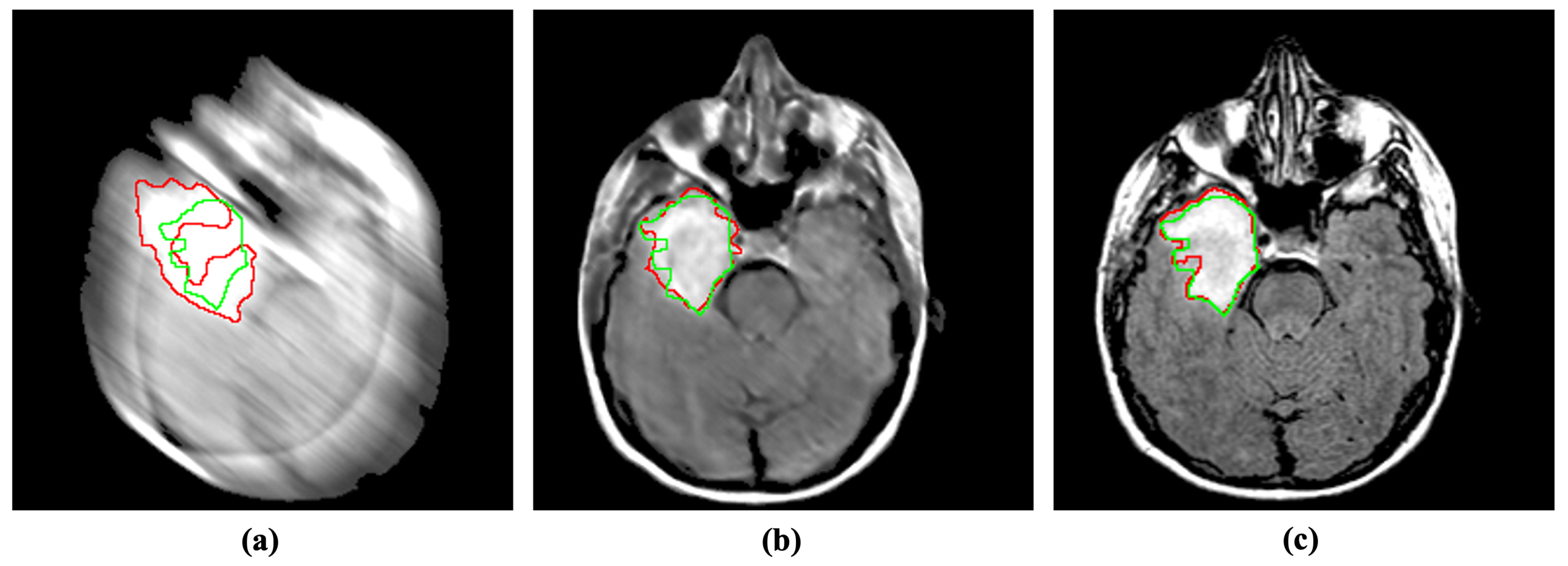
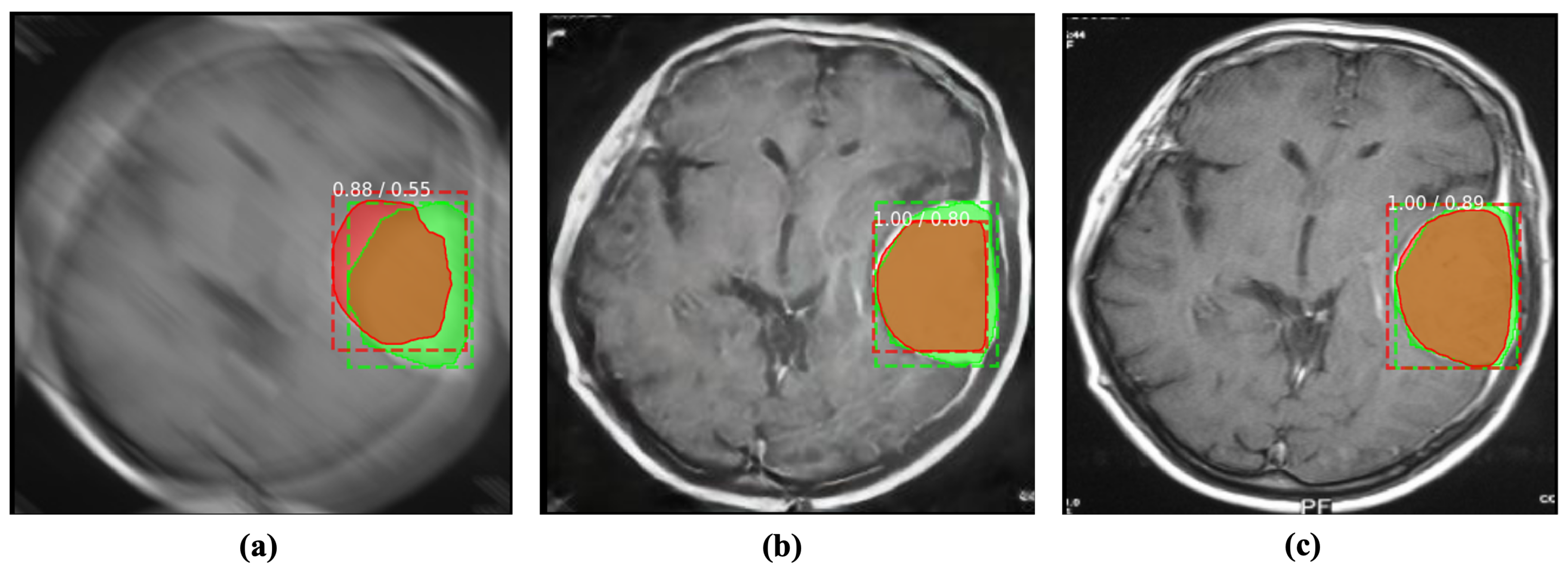
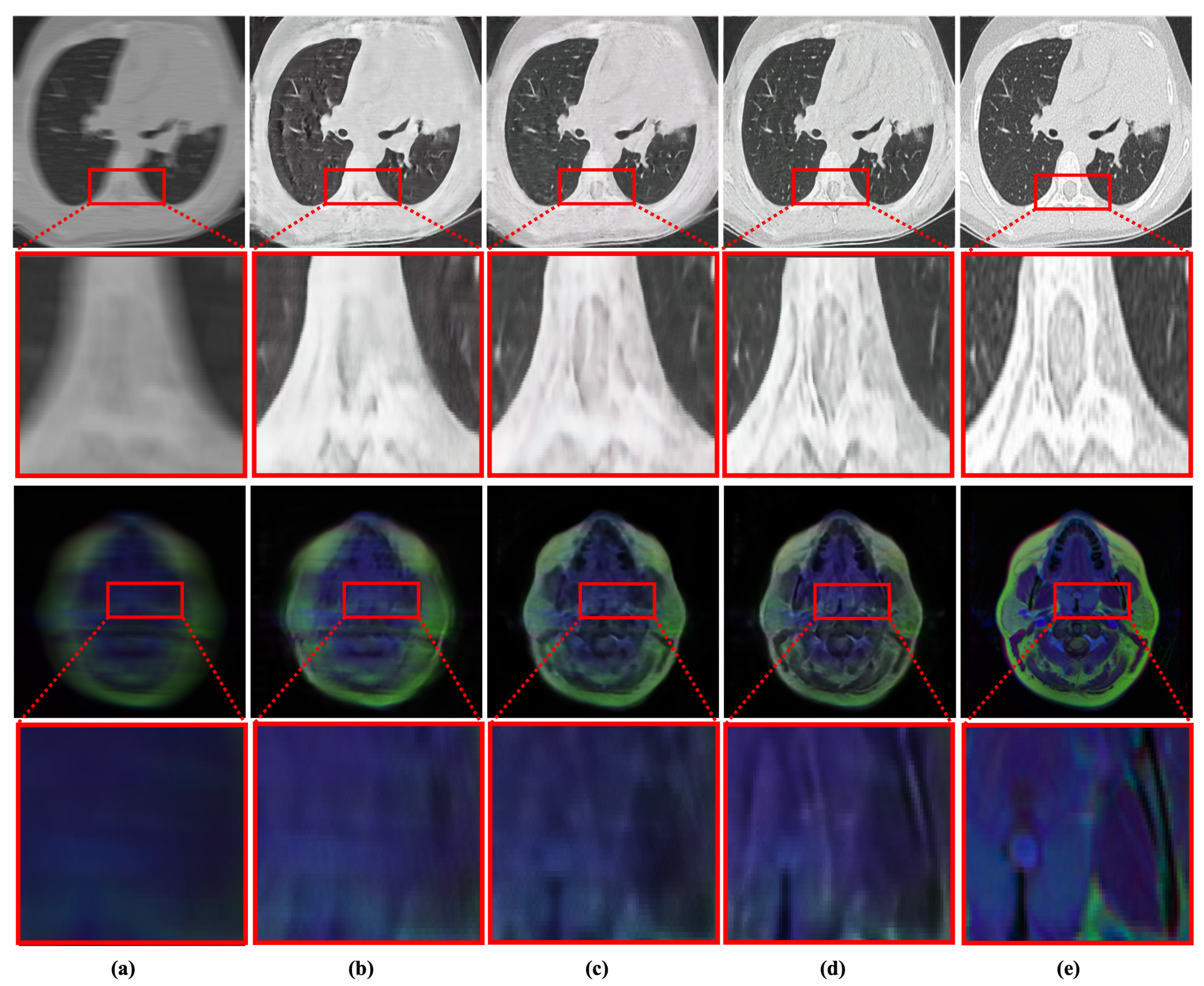

| Category | Method | Strength | Weakness | |
|---|---|---|---|---|
| Medical Image Deblurring | Non Learning Methods | Utilize sharpening filters | • Do not require pair images for training • Do not require training | • Can not handle large-scale blur • Can not handle diverse data |
| Learning Based Method | Learn removing blurs from medical images | • Can remove large-scale blurs • Optimized for medical image | • Learn from synthesized data • Limited to the specific dataset | |
| Deep Deblurring | Learns deblurring as coarse to refine manners | • Outperforms traditional deblurring methods • Can handle large-scale blurs | • Do not utilize spatial-asymmetric attention • Not optimized for medical image | |
| Proposed Method | Learns MID from multi-domain medical images with RD-SAM | • Can handle large-scale blind-blurs • Utilize RD-SAM on scale-recurrent structure • Medical modality independent | Learns from synthesized data | |
| Method | Dataset | PSNR ↑ | SSIM ↑ | DeltaE ↓ |
|---|---|---|---|---|
| TEMImageNet | ChexPert X-ray | 21.05 | 0.55 | 7.02 |
| Zao Net | 23.27 | 0.64 | 4.23 | |
| Deep Deblur | 23.05 | 0.65 | 4.41 | |
| SRN Deblur | 27.06 | 0.75 | 2.82 | |
| Proposed | 28.09 | 0.79 | 2.59 | |
| TEMImageNet | COVID-19 CT Scan | 17.27 | 0.51 | 10.24 |
| Zao Net | 23.08 | 0.70 | 4.09 | |
| Deep Deblur | 23.17 | 0.71 | 4.29 | |
| SRN Deblur | 27.43 | 0.82 | 2.59 | |
| Proposed | 28.74 | 0.84 | 2.48 | |
| TEMImageNet | Human Protein Atlas | 19.08 | 0.13 | 6.33 |
| Zao Net | 28.72 | 0.77 | 1.47 | |
| Deep Deblur | 29.82 | 0.82 | 1.45 | |
| SRN Deblur | 30.76 | 0.83 | 1.24 | |
| Proposed | 31.13 | 0.86 | 1.17 | |
| TEMImageNet | HRM Skin Lesion | 16.40 | 0.49 | 11.52 |
| Zao Net | 26.87 | 0.83 | 3.87 | |
| Deep Deblur | 27.53 | 0.82 | 3.42 | |
| SRN Deblur | 29.05 | 0.83 | 3.04 | |
| Proposed | 30.33 | 0.85 | 2.72 | |
| TEMImageNet | Brain MRI | 19.56 | 0.40 | 7.71 |
| Zao Net | 27.75 | 0.69 | 4.28 | |
| Deep Deblur | 28.60 | 0.77 | 4.11 | |
| SRN Deblur | 31.78 | 0.78 | 3.50 | |
| Proposed | 32.05 | 0.83 | 3.47 | |
| TEMImageNet | Average | 18.67 | 0.42 | 8.56 |
| Zao Net | 25.94 | 0.73 | 3.59 | |
| Deep Deblur | 26.43 | 0.75 | 3.53 | |
| SRN Deblur | 29.21 | 0.80 | 2.64 | |
| Proposed | 30.07 | 0.83 | 2.49 |
| Method | Muli-Scale | RD-SAM | PSNR ↑ | SSIM ↑ | DeltaE ↓ |
|---|---|---|---|---|---|
| Base | ✗ | ✗ | 27.67 | 0.77 | 3.13 |
| Base Multi-scale | ✗ | ✓ | 28.42 | 0.79 | 2.92 |
| Proposed | ✓ | ✓ | 30.07 | 0.83 | 2.49 |
| Dimension | 64 * 64 | 128 * 128 | 256 * 256 |
|---|---|---|---|
| Inference Time (ms) | 28.47 | 36.65 | 97.17 |
| FLOPs (M) | 3.63 | 14.52 | 58.06 |
| Trainable Parameters (million) | 24.1 | ||
| Memory (MB) | 8688.81 | 139,311.63 | 2,234,282.94 |
Disclaimer/Publisher’s Note: The statements, opinions and data contained in all publications are solely those of the individual author(s) and contributor(s) and not of MDPI and/or the editor(s). MDPI and/or the editor(s) disclaim responsibility for any injury to people or property resulting from any ideas, methods, instructions or products referred to in the content. |
© 2022 by the authors. Licensee MDPI, Basel, Switzerland. This article is an open access article distributed under the terms and conditions of the Creative Commons Attribution (CC BY) license (https://creativecommons.org/licenses/by/4.0/).
Share and Cite
Sharif, S.M.A.; Naqvi, R.A.; Mehmood, Z.; Hussain, J.; Ali, A.; Lee, S.-W. MedDeblur: Medical Image Deblurring with Residual Dense Spatial-Asymmetric Attention. Mathematics 2023, 11, 115. https://doi.org/10.3390/math11010115
Sharif SMA, Naqvi RA, Mehmood Z, Hussain J, Ali A, Lee S-W. MedDeblur: Medical Image Deblurring with Residual Dense Spatial-Asymmetric Attention. Mathematics. 2023; 11(1):115. https://doi.org/10.3390/math11010115
Chicago/Turabian StyleSharif, S. M. A., Rizwan Ali Naqvi, Zahid Mehmood, Jamil Hussain, Ahsan Ali, and Seung-Won Lee. 2023. "MedDeblur: Medical Image Deblurring with Residual Dense Spatial-Asymmetric Attention" Mathematics 11, no. 1: 115. https://doi.org/10.3390/math11010115
APA StyleSharif, S. M. A., Naqvi, R. A., Mehmood, Z., Hussain, J., Ali, A., & Lee, S.-W. (2023). MedDeblur: Medical Image Deblurring with Residual Dense Spatial-Asymmetric Attention. Mathematics, 11(1), 115. https://doi.org/10.3390/math11010115








